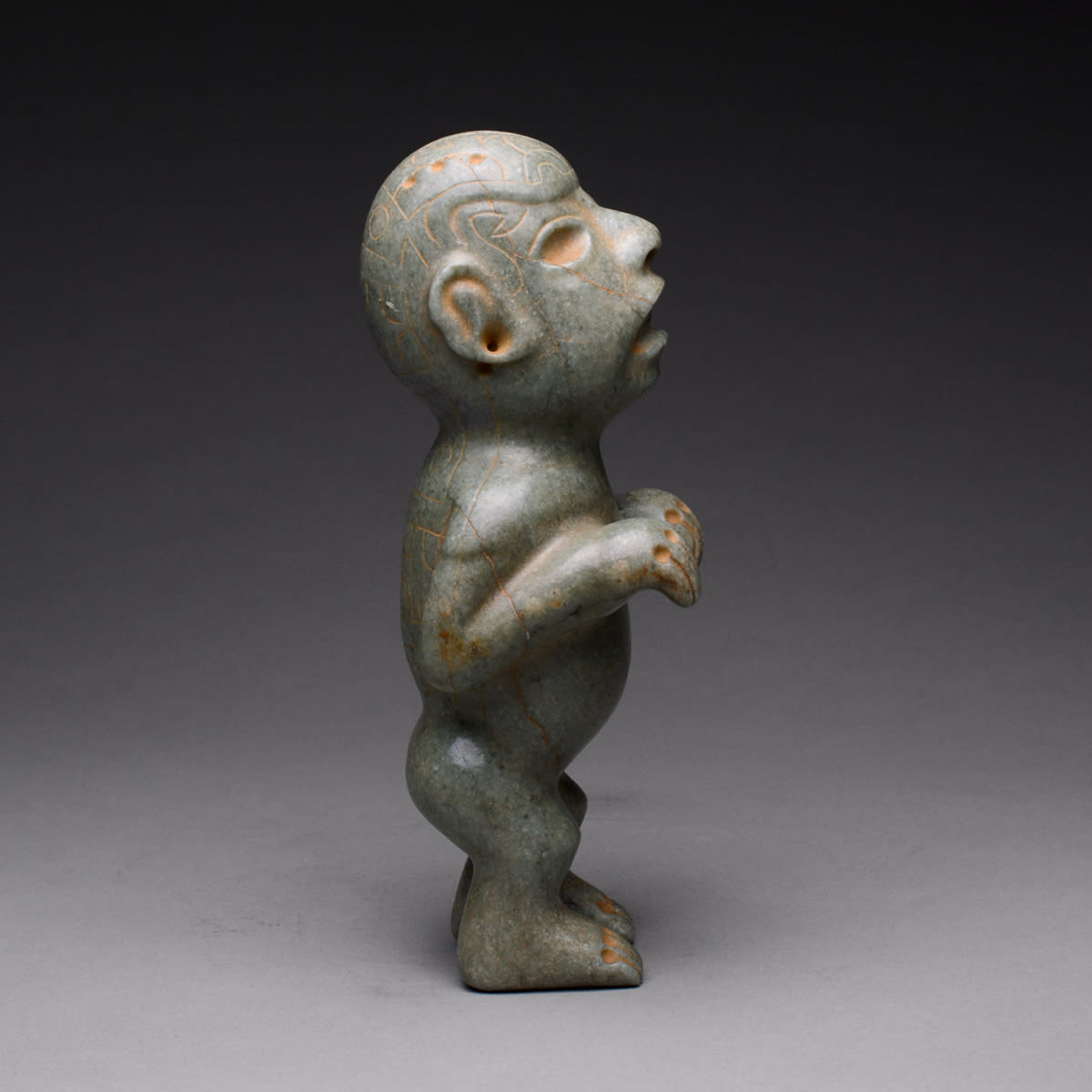Olmec Jade Figure, 900 BC to 600 BC
Jade
20.3 x 5.1 cm
8 x 2 in
8 x 2 in
PH.0273
Further images
The Olmecs are generally considered to be the ultimate ancestor of all subsequent Mesoamerican civilizations. Thriving between about 1200 and 400 BC, their base was the tropical lowlands of south...
The Olmecs are generally considered to be the ultimate ancestor of all subsequent Mesoamerican civilizations. Thriving between about 1200 and 400 BC, their base was the tropical lowlands of south central Mexico, an area characterized by swamps punctuated by low hill ridges and volcanoes. Here the Olmecs practiced advanced farming techniques and constructed permanent settlements. A non- literate group, the Olmecs nevertheless paved the way for the development of writing systems in the loosely defined Epi-Olmec period (c. 500 BC). Further innovations include arguably the first use of the zero, so instrumental in the Maya long count vigesimal calendrical system. They also either retained or invented several religious symbols such as the feathered serpent and the rain spirit, which persisted in subsequent and related cultures until the middle ages. Some of the Olmec’s most prized creations are their jade figures and masks, as shown here. Monumental stone heads can weigh up to forty tons and are generally assumed to represent a leader or ancestral figure. Smaller jade figures and celts are believed to be domestically or institutionally based totems or divinities. The quality is astonishing, particularly if one considers the early date of production, the technology available at the time, and the dearth of earlier works upon which the Olmec sculptors could draw, making this an exquisite piece of Olmec art.







